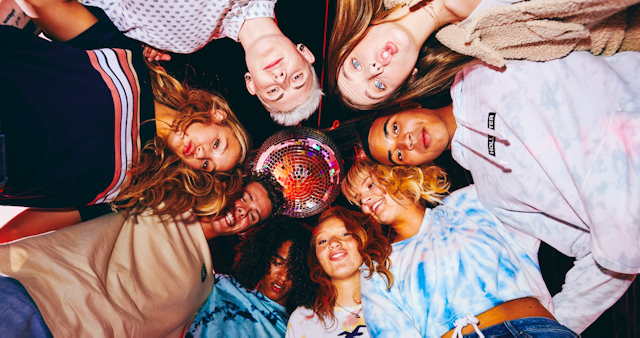By blurring the line between influencer and model, Hollister optimizes its marketing costs
At Hollister, photoshoots are now called “content shoots”, models are treated like influencers and talent doubles as a reliable Gen Z research group. It’s the result of a “customer-centric” reorganization designed to move the brand firmly away from its unobtainable SoCal roots.
When Abercrombie & Fitch first launched Hollister in 2000, the brand’s stores were designed to be the the teen destination of its parent company. The creative, a toned-down version of A&F’s previously "sexualized marketing", was still highly evocative of the aspirational Southern California lifestyle, featuring thin, pretty young things who were nearly always white.
Until roughly five years ago, marketing and lifestyle creative was produced by Hollister’s in-house production unit with art direction from Bruce Weber. The photographer, who has since faced allegations of sexual misconduct, worked closely with Abercrombie & Fitch brands for more than a decade, running editorial-inspired shoots typical of the industry.
“We would go with just a small shot list to get a couple of key shots,” said Matt Montgomery, group vice-president and executive creative director at Hollister. “Now, we're working with multiple sets at one time on one day capturing all assets.
“We don't even call them photoshoots anymore. We call them content shoots.”
The change occurred after upheaval in the company: long-term A&F chief executive Michael Jeffries stepped down in 2014 and the company almost immediately announced plans to tone down the bare abs and its infamous exclusive looks policy.
Fran Horowitz, now chief executive, joined the company as brand president in the same year and Hollister was allowed space to rethink what it stood for. It settled on the desire to be and “inclusive, relatable, confidence building brand” for teenagers.
Weber stopped working with the brand and “a complete in-house agency” was launched. The heavy customer focus led to the company reorganizing its units wholly around that consumer, allowing for more collaboration between departments on decisions such as creative direction.
Production, however, was outsourced to the LA-based Summerjax. Now, five years into the relationship, representatives from the LA house are treated as an extended part of the Hollister team, charged with coordinating creative shoots far removed from the Weber days.

In order to capture the holy grail of “relatable marketing”, Hollister models are now captured in a natural environment, from the moment they land on set to the moment they get back on the plane.
Montgomery is thinking not about the winning money shot but about “how we interact with them, how we pick them up, what's going to happen in the car, how are they going to be delivered to wherever they're staying” – what he calls the authentic “in-between” moments.
Content is captured not just on film but through iPhones, in Boomerangs and on Go-Pros – the same capture methods the kids in the shoot are used to using every day. As such, more content is being produced than before.
“It’s just about maximizing the amount of time we have with our crews so that we can be efficient,” explained Annie Beiner, director of production at Summerjax, who sits in-house with the Hollister team.
The set-up is similar to a sponsored influencer jaunt, where paid creators are encouraged to document every part of the journey for their own social networks. But it aligns with Hollister’s “expanded and teared out” approach to talent: nowadays, models aren’t just plucked out of agencies. They’re discovered on Instagram and in real life, too.
The greatest amalgamation of these reestablished definitions of models and influencers is Hollister Collective, the company’s brand ambassador program. The initiative, or “family” as Montgomery dubs it, comprises the label’s paid-up talent, as well as a group of high school field marketing agents.
These so-called brand agents come from high schools across the US and act as microinfluencers for Hollister in their communities. In exchange for in-store discounts and early access to clothing drops, members of the collective are encouraged to post lifestyle content featuring Hollister products on social media, in the hopes their UGC may be featured on the official Hollister feed.
The brand agents are additionally tasked with sharing insights on fashion and lifestyle trends in their respective communities. In this sense, the Hollister Collective doubles as a focus group and sounding board for the brand’s marketing and product development teams, too.
Currently operating as a soft launched, grassroots movement, Hollister Collective is primed to play a bigger part in the brand’s growth going forward.
“We see the future of the Hollister Collective growing and [we’re looking at] ... inviting these real kids in more and more in different way,” said Montgomery. “That’s going to grow a lot faster in the next couple of months and the turn of the year.”

